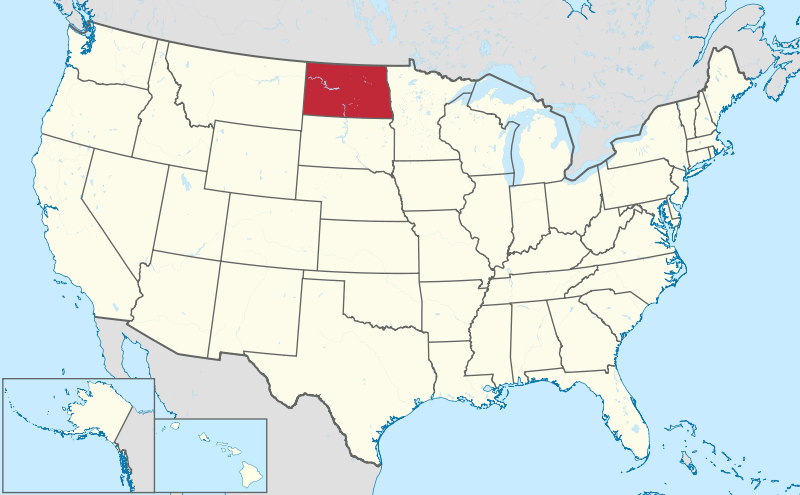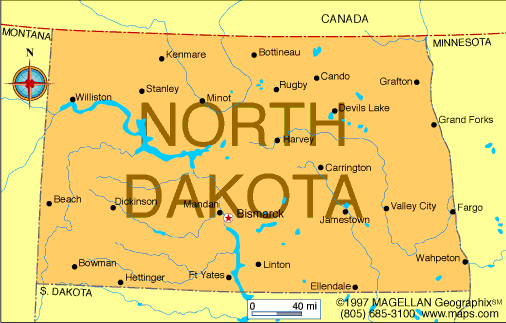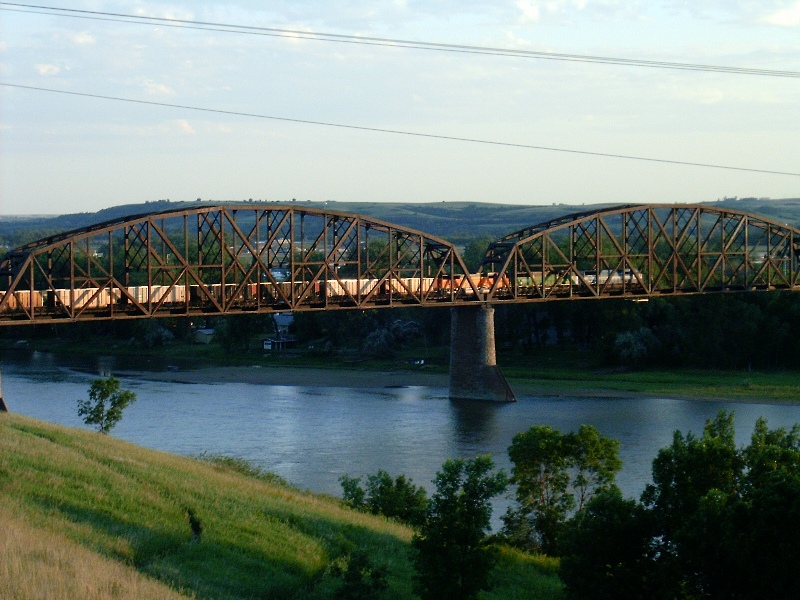Geography of the North Dakota state

Situated in the geographical center of North America, North Dakota 22 in . (55 cm ), much of it falling in
the crop-growing spring and summer months, enables the rich soil to yield
abundantly.
Along the banks of the Red River lies a wedge of land, c.40
mi (60 km )
wide at the Canadian border and tapering to 10 mi (16 km ) in the south, that is
the floor of the former glacial Lake
Agassiz 65,000
acres (1,200–26,000 hectares).
History
Lewis and Clark explored
the region in 1804–1806, and the first settlements were made at Pembina in 1812
by Scottish and Irish families while this area was still in dispute between the
U.S. and Great Britain

The Garrison
Dam on the Missouri River provides extensive irrigation and produces 400,000
kilowatts of electricity for the Missouri Basin areas.
You can find more
infotmation about history of North Dakota on this sites: http://www.factmonster.com/ipka/A0108256.html
Bismarck is the capital of the U.S. state of North Dakota and the county seat of Burleigh County. It is the second most populous city in
 The North Dakota State Capitol, the tallest
building in the state, towers over the central part of
The North Dakota State Capitol, the tallest
building in the state, towers over the central part of 

And here is some more information about Bismarck
Drew Wrigley
Drew Howard Wrigley is the 37th and current Lieutenant
Governor of North Dakota. He was appointed by Governor Jack Dalrymple on
December 7, 2010. Wrigley previously served as United States Attorney for the
District of North Dakota (2001–2009), as Deputy Chief of Staff to Governor John Hoeven (2000),
and as Chairman of the North Dakota Republican Party
A native of Bismarck, North Dakota, Wrigley grew up in Fargo, North Dakota, where he graduated from Fargo South High School; he is a
fourth-generation North Dakotan, with roots in Burke County and Walsh County.[2] He
is a graduate of the University of North Dakotain Grand Forks, ND,
where he received a Bachelor's Degree in Economics. He completed his Juris Doctorate at American University inWashington, DC.
After law school, he served as an assistant district attorney in Philadelphia, PA before
returning to North Dakota.
You can read more here:
http://governor.nd.gov/lieutenant-governor-drew-wrigley
http://ballotpedia.org/wiki/index.php/Drew_Wrigley
http://www.ndgop.org/view/elected-officials/statewide-officials/lieutenant-governor-drew-wrigley/
http://governor.nd.gov/lieutenant-governor-drew-wrigley
http://ballotpedia.org/wiki/index.php/Drew_Wrigley
http://www.ndgop.org/view/elected-officials/statewide-officials/lieutenant-governor-drew-wrigley/

No comments:
Post a Comment